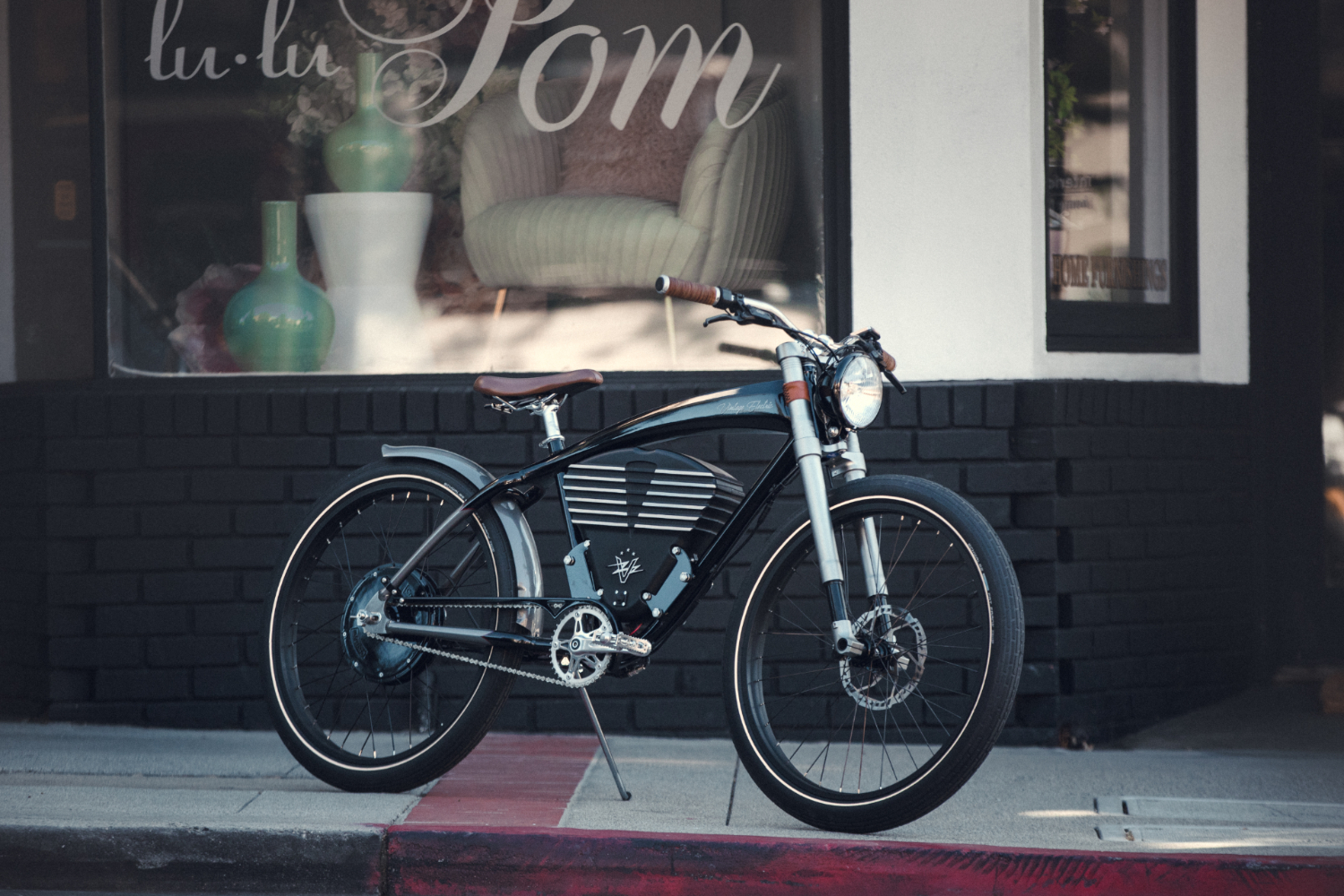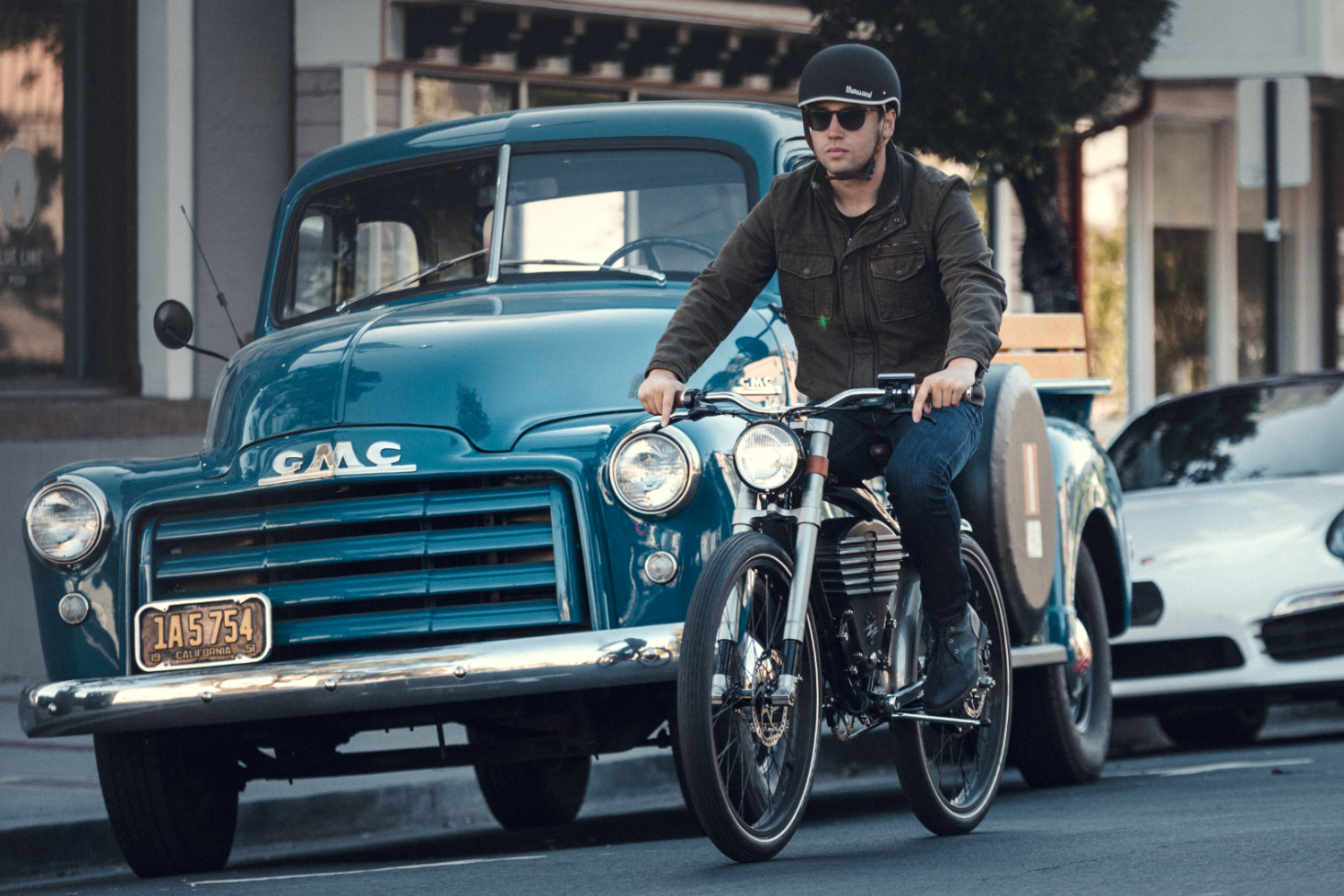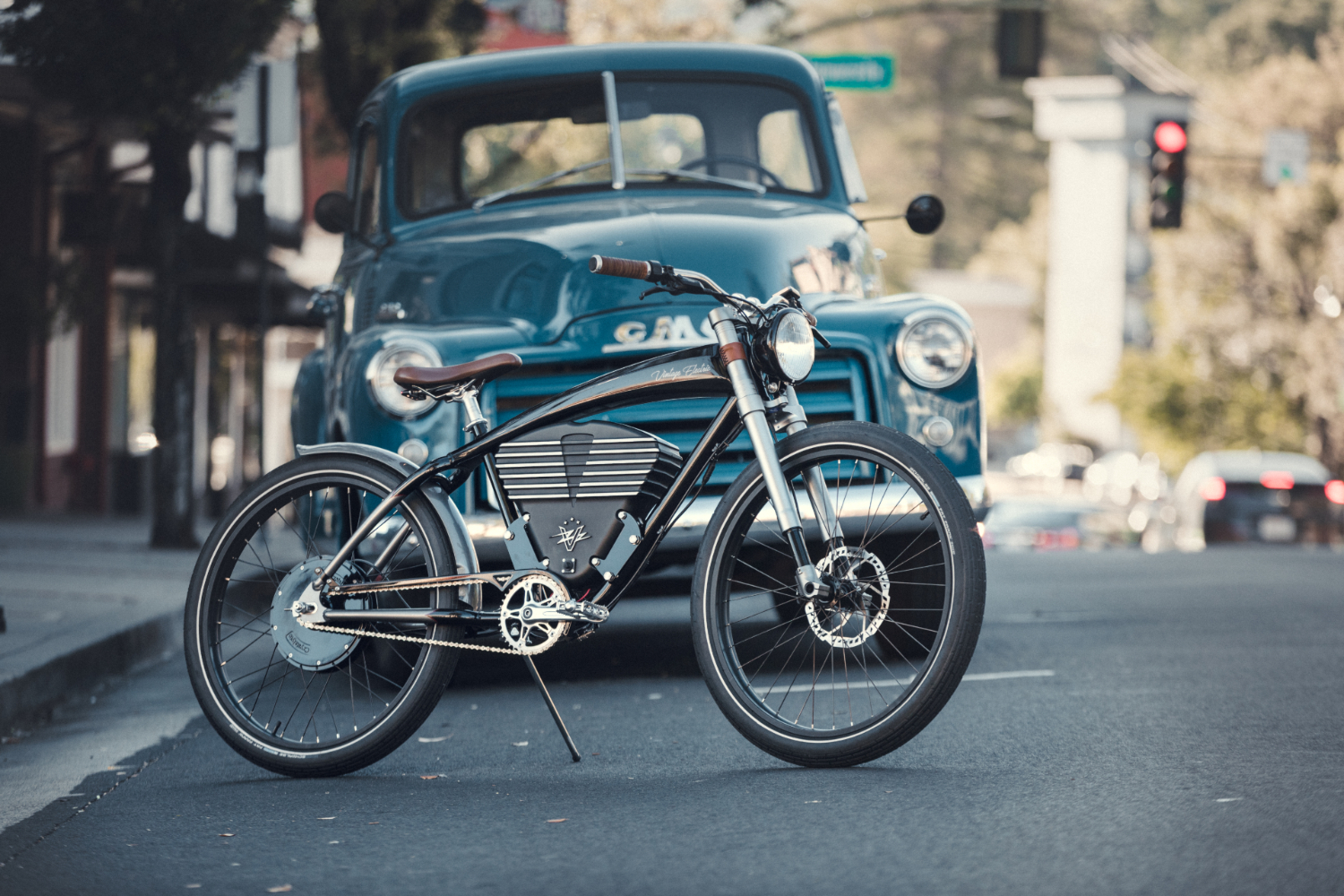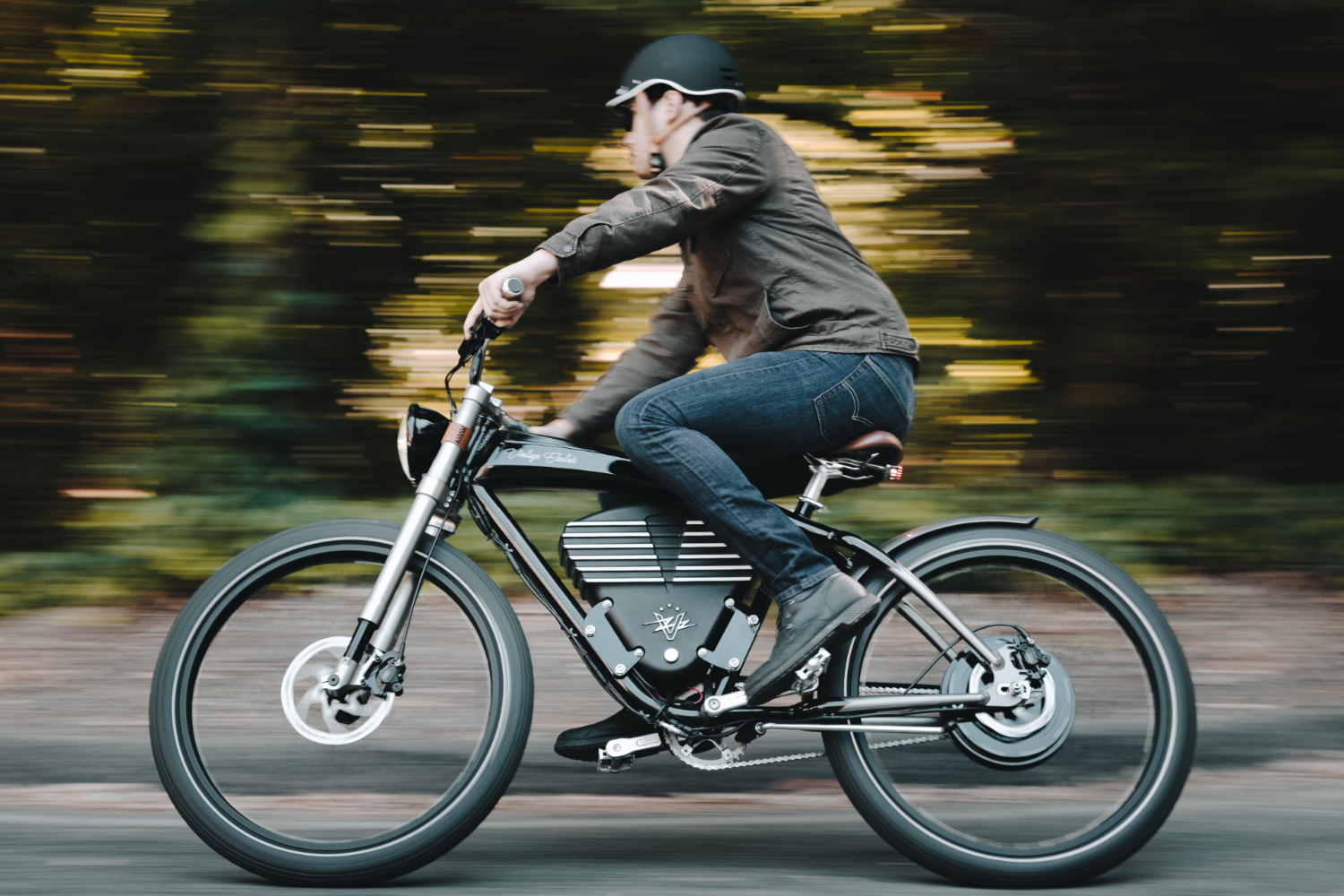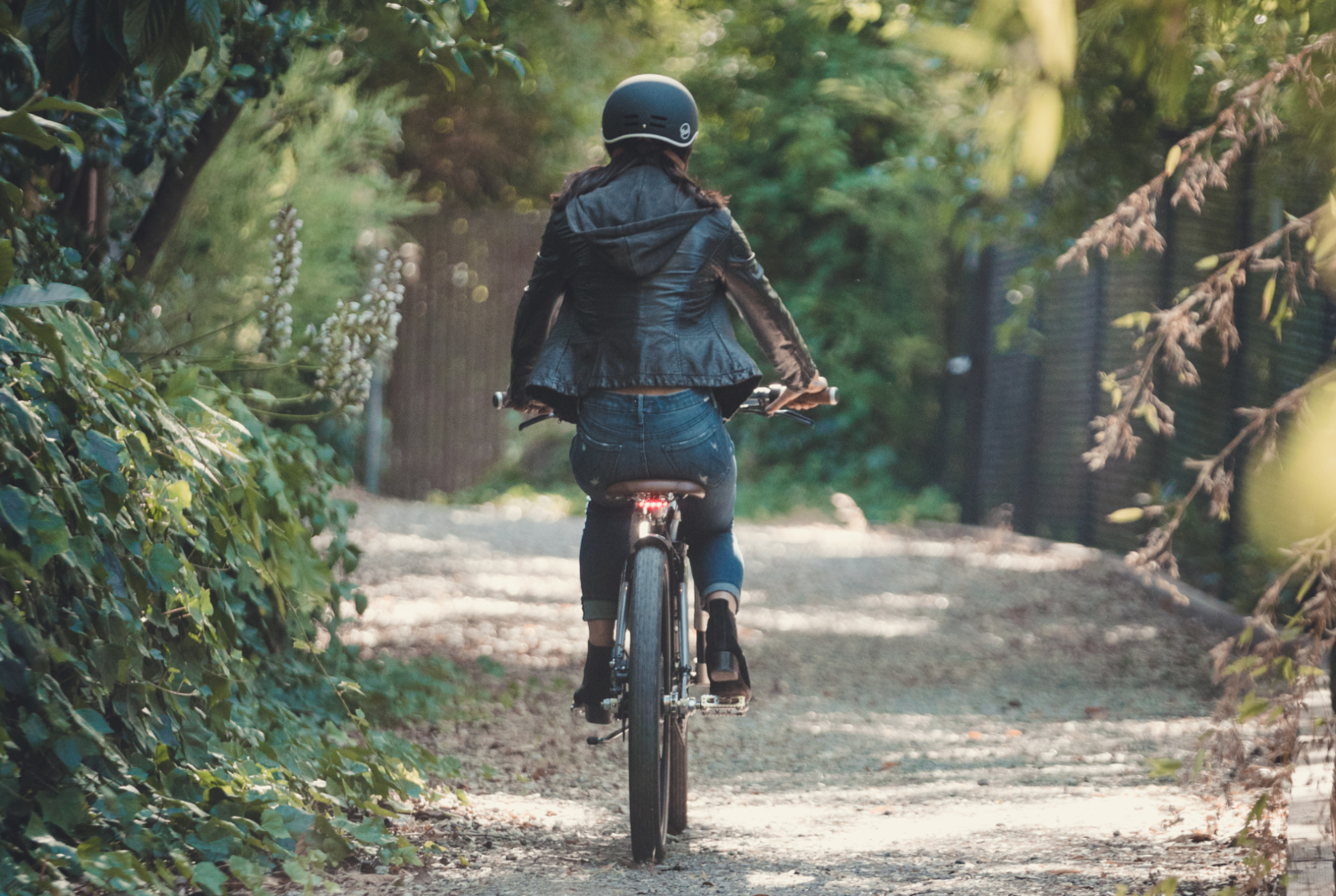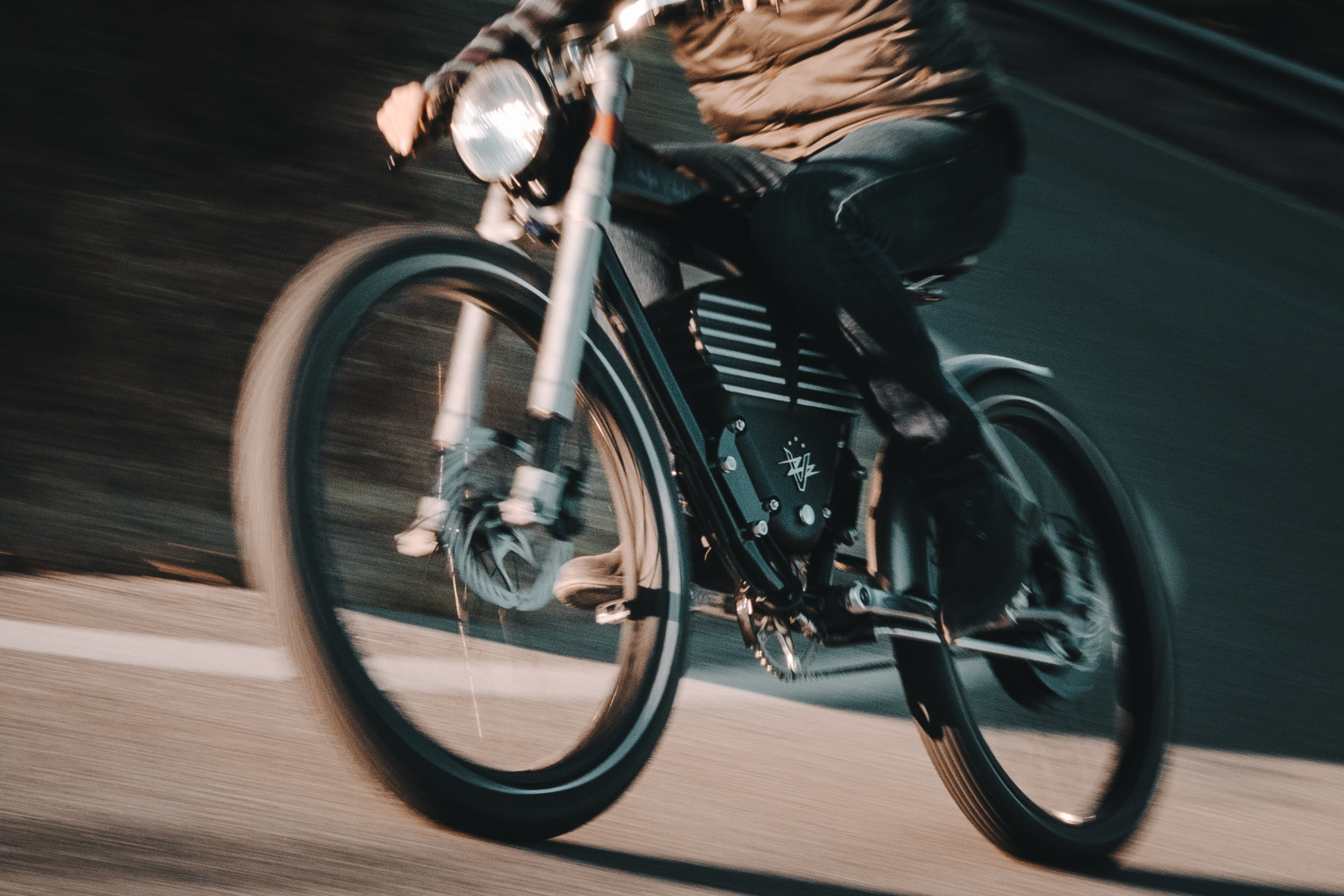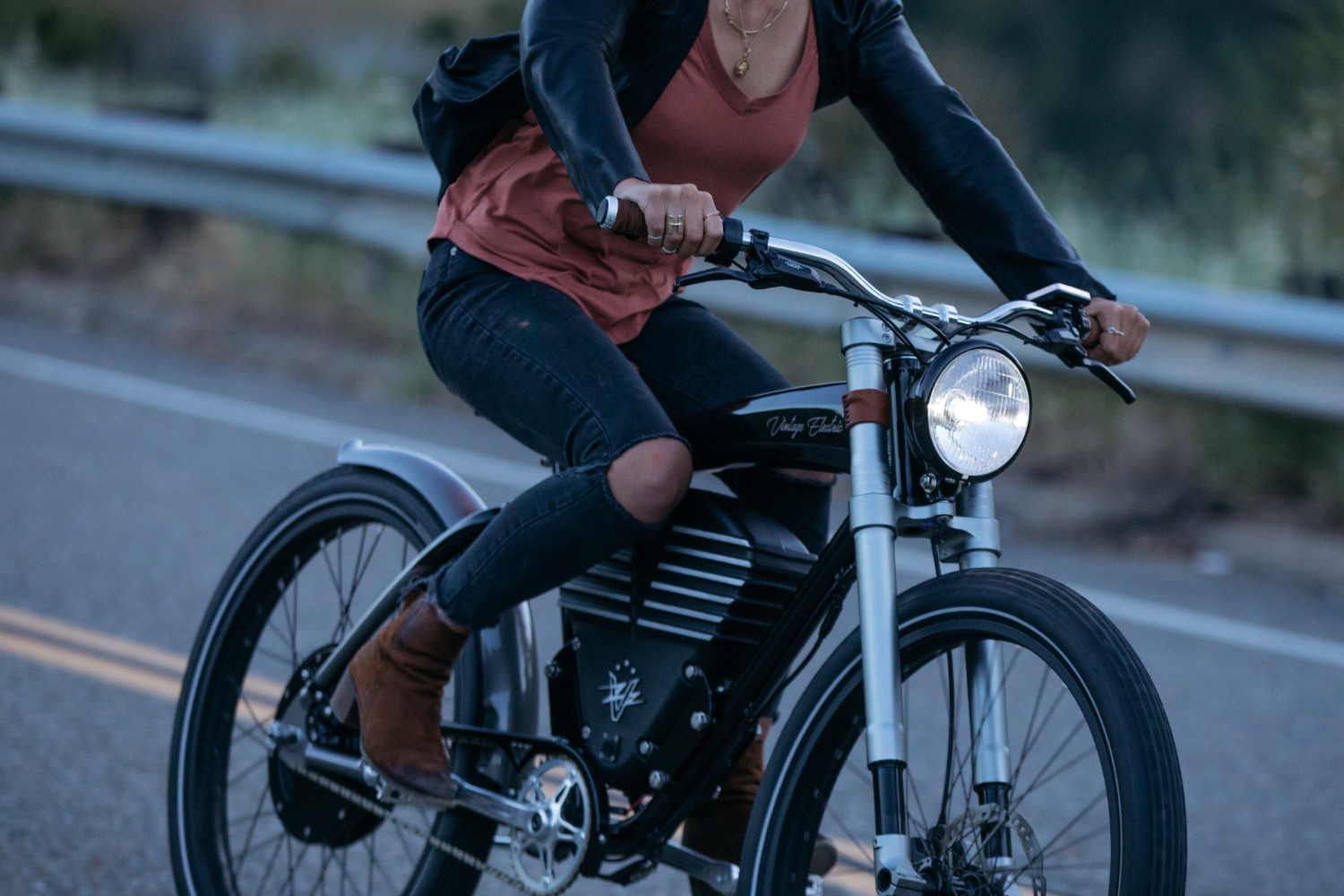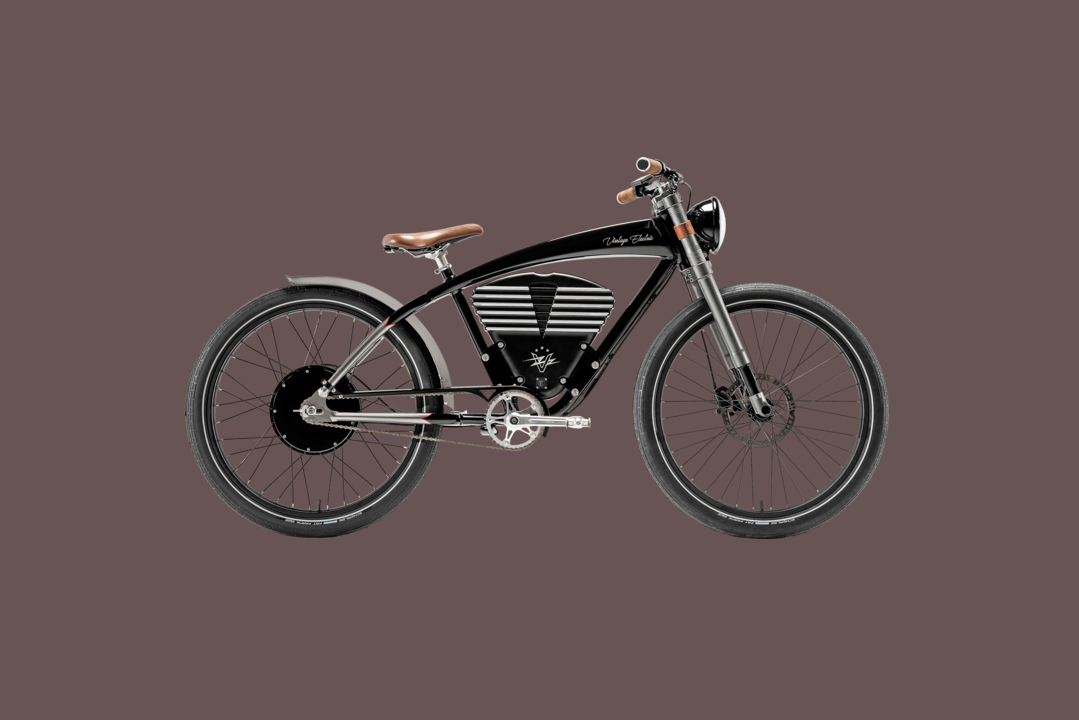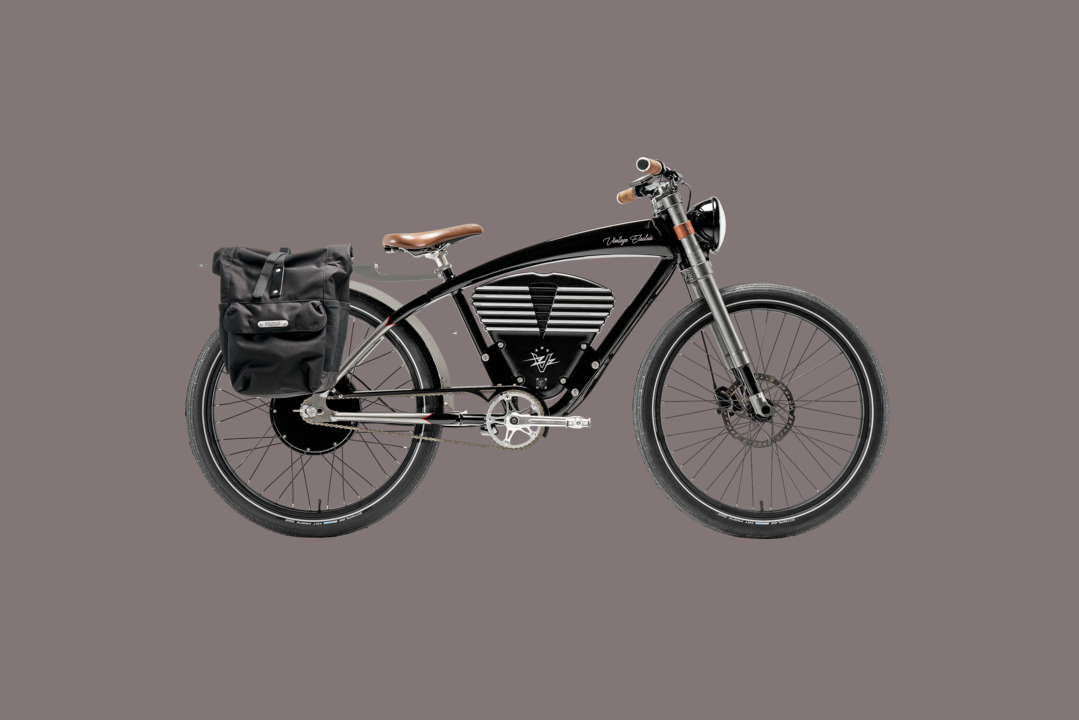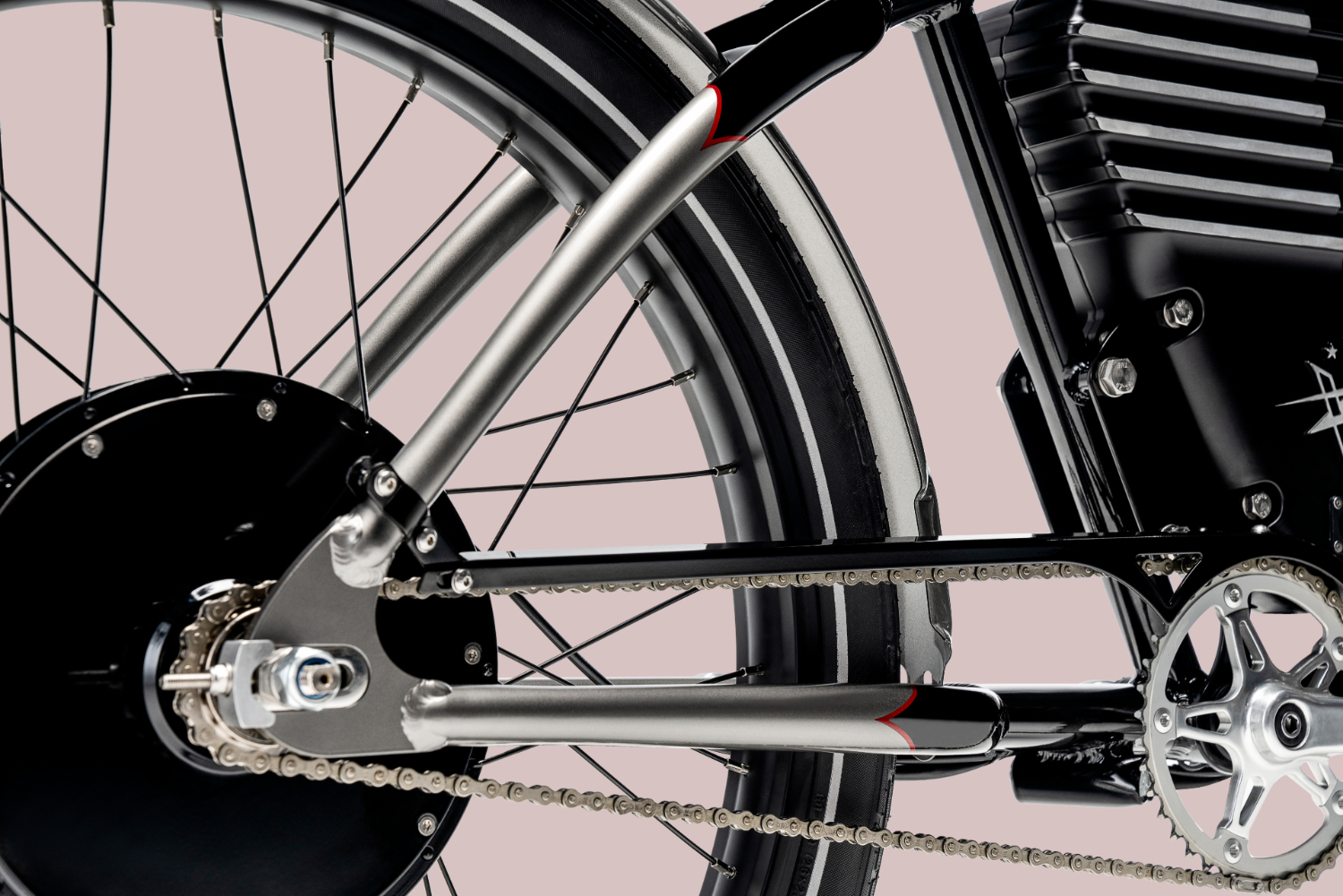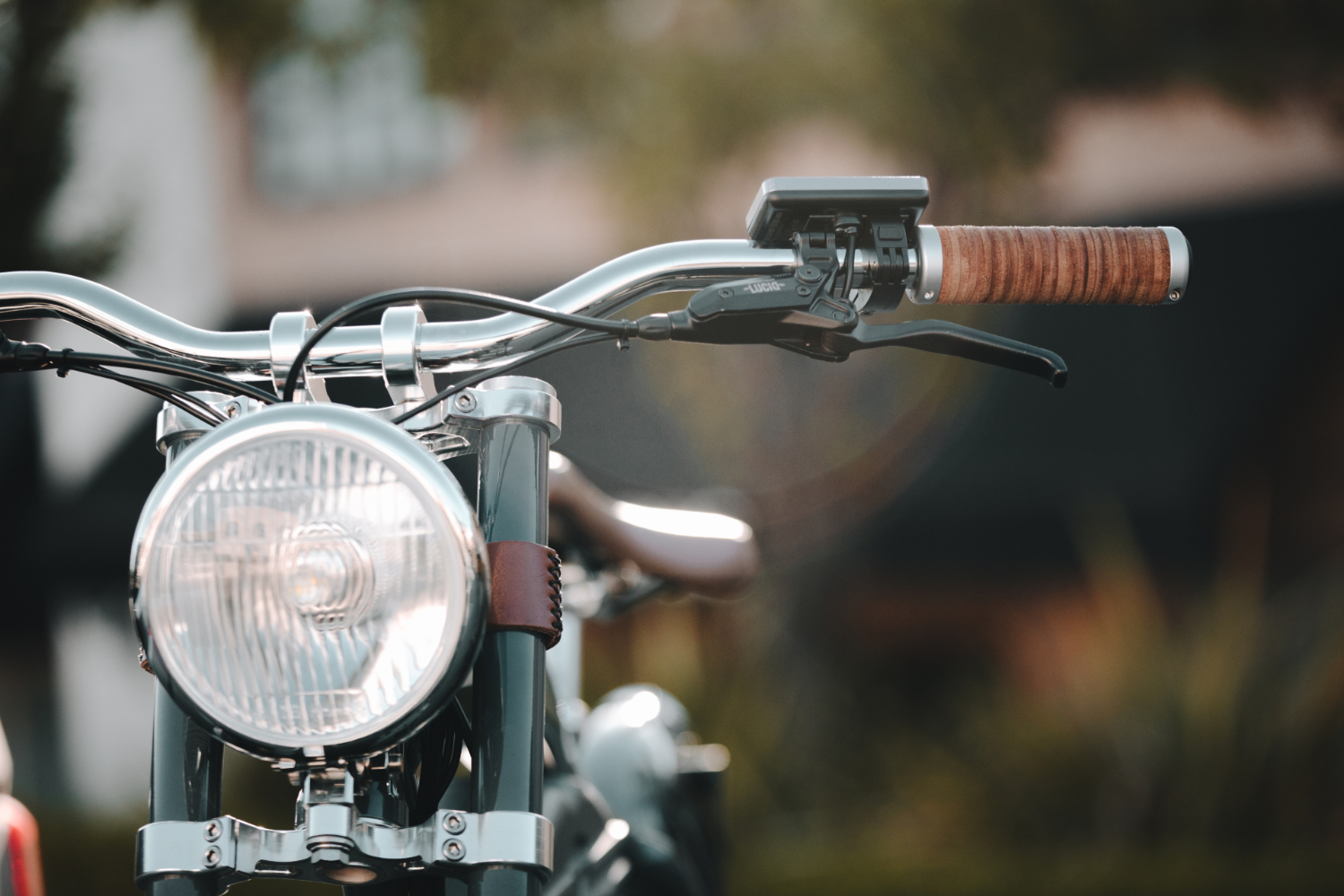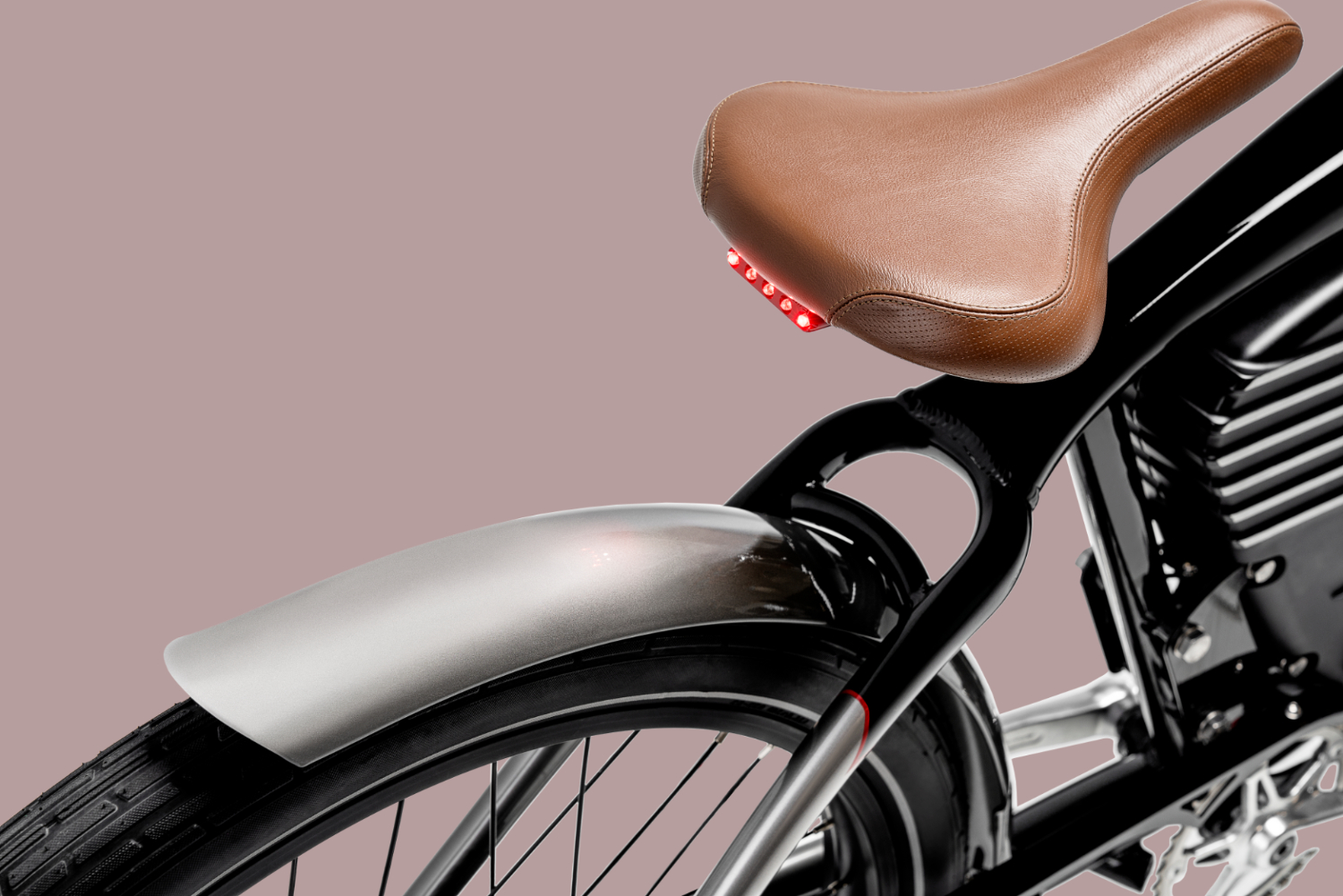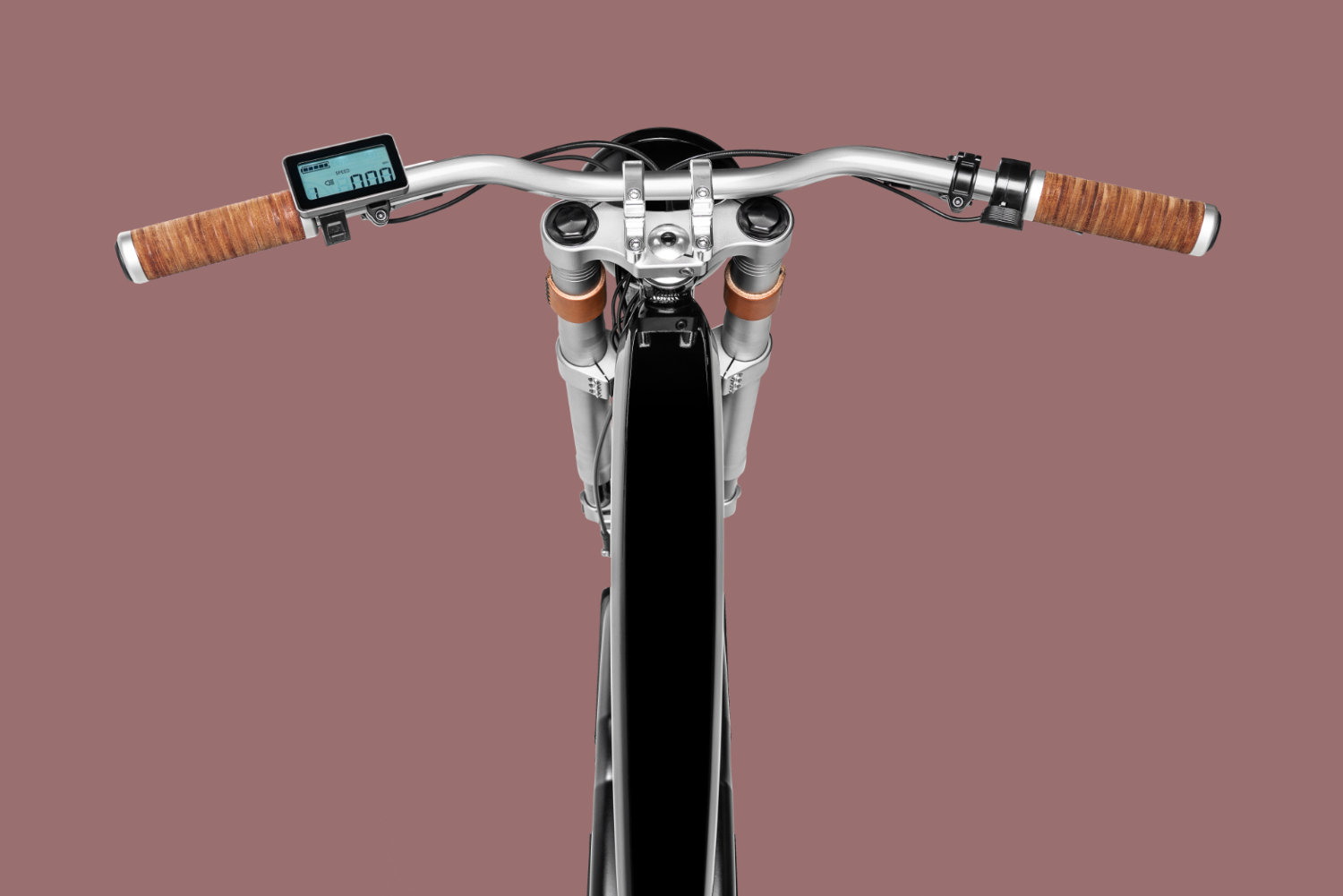Vintage Electric introduced the latest in its line of retro-styled premium performance ebikes for fall 2019. The Vintage Roadster gets its styling cues from classic board track racing motorcycles and its power from a 1,123-watt battery.
You’ll be excused if you think the Roadster looks more like a motorcycle than a bicycle. The resemblance is intentional. Vintage characterizes each of its five models with a descriptive nickname. The Rally model is known as as “Rowdy Elegance,” and the Scrambler ebike is “Adventure Amplified.” The new Roadster’s nickname is “Speed Merchant.”
All Vintage Electric models emphasize speed. Most ebikes on the market are speed-limited by their vehicle class to no more than 20 mph. The Vintage Cafe and Rally models are Class 3 ebikes with a maximum 28 mph speed with pedal assistance, but do not have a throttle-only mode. Like the Tracker and Scrambler models, the Roadster is a Class 2 ebike, which specifies both pedal assistance and throttle-only mode.
Class 2 ebikes are limited to just 20 mph, but the Vintage Tracker, Scrambler, and Roadster each have an available $149 “Race Mode” option. When the Race Mode key is inserted, the motor puts out more power and the maximum speed to 36 mph. Vintage cautions that Race Mode only should be engaged when riding on private property.
With a hydroformed aluminum frame and inverted suspension front fork with 60mm of travel, the Roadster rides on 26-inch diameter by 2.35-inch-wide Schwalbe Fat Frank tires with a layer of kevlar to resist punctures. The front wheel hub is polished black with a 2mm thru-axle and the rear hub houses the 135mm 750-watt/3000-watt direct drive. The motor puts out 750 watts in Street Mode and 3,000 watts in Race Mode.
The Roadster’s 48-volt, 234-amp-hour battery delivers 1,123-watt-hours for a rated 40-75 miles of range in street mode. Race Mode cuts the range in inverse proportion to the higher speed. The battery charges in 4.5 hours with the included standard charger. The ebike’s headlight and taillight are both 6-volt LEDs powered by the battery.
When you ride the Roadster with pedal assistance, you can select from five power levels. Lower assistance levels translate to longer battery life and therefore to travel range. You also use the bike’s thumb-throttle for power without pedaling.
You can regain a bit of battery power when you engage the rear regenerative hydraulic disc brake. The front and rear wheels both have Promax Lucid hydraulic disc brakes for firm stoppage – a necessity with an ebike that can tool along at a solid 36 mph (on private property). Photos of the bike breaching a rise with the front wheel in the air hint that the Roadster belongs to the relatively small group of wheelie-capable performance ebikes.
A dual-density perforated leather saddle matches the Roadster’s leather grips on a Choromoly rise bar. The ebike is available in one two-tone color combination: Gloss Black and Silver. The seat post and seat binder are polished alloys and the steering stem billet aluminum. The 26-inch by 50mm rims have stainless steel spokes.
The Vintage Electric Roadster lists for $6,995. Race mode, without which purchasing this bike is about style only, is a $149 option. You can also add a rear rack for $289, a rack with one pannier for $438, or a rack with two panniers for $587. A two-year warranty backs the Roadster for original purchasers only.
Board track racing was popular in the 1910s and 1920s. The round and oval tracks were made from two by fours and ranged from 0.5 to 2 miles long. The first board track, the 1.0-mile Los Angeles Motordrome, was built in 1910. Board tracks were inexpensive to construct compared to asphalt pavement, but they were not durable and often needed rebuilding within three years. Due to a combination of factors including the onset of the Great Depression, board track racing ended in the late 1920s.
